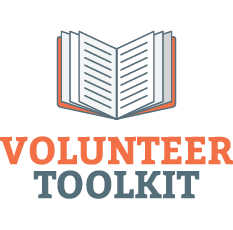Before, During, and After Reading
Reading
Reading is a process that begins before a student starts a text and does not end until after the student has completed and reflected on it. The main purpose is comprehension.
Volunteers can help students actively engage in the text before, during, and after reading. Reading involves connecting new text to something that is already understood (prior knowledge).
Before Reading
Before reading strategies are used to get students to activate their existing knowledge and to set a purpose for reading.
Before reading strategies help students generate questions, make predictions and discuss vocabulary.
Volunteer asks questions about the book:
- Let’s read the title of the book. What do you think this book is about?
- What do you know about this topic? What questions do you have about this topic?
- Who is the author of this book? Have you read other things by this author?
- This book has an illustrator. Can you find his name? Let’s look through the book at some of his illustrations.
Before Reading Activity
Vocabulary Splash – Choose several words from the story and ask the student if she knows their meaning. Search online or in a dictionary for the definitions. Talk about the words and then talk about how they are used in the text as you read the story.
During Reading
During reading strategies help students make connections, make predictions, and summarize text.
During reading strategies help students monitor their understanding, generate questions, use mental imagery, and stay focused.
During reading strategies help students integrate the new information that they have learned with their prior knowledge.
Volunteer asks questions about what is being read:
- What did that paragraph say? Do you need to reread it? Rereading often can help with understanding.
- What clues in this paragraph will help you figure out that unfamiliar word?
- What do you know about (the topic)?
- What does that scene look like to you?
- What do you think is going to happen next?
- Why do you think he did that?
- How do you think she felt? Have you ever felt that way?
- What is going on in that illustration?
- Can you summarize that paragraph we just read? What do you do when you summarize?
- Do you know what infer means? What can you infer from her actions?
During Reading Activity
- Ask the student to summarize the story so far.
- Ask the student what he thinks will happen next.
- Ask the student to point out vocabulary words as they are used in the text.
After Reading
After reading strategies give students an opportunity to reflect on the content they have just read.
After reading is a time for students to evaluate their predictions.
After reading gives students an opportunity to ask questions and retell, or summarize, what they have read.
Volunteer asks questions about what was read:
- Were your questions about the topic answered?
- Did your predictions match what happened in the story?
- Did you like this book? Why or why not?
After Reading Activity
- Ask the student if his predictions were verified; did they need to be revised?
- Ask the student if she has questions about the story.
- Ask the student to complete a story map focusing on the “Beginning.” “Middle,” and “End” of the story.
- Ask the student to write a short story using the vocabulary words reviewed before reading.
Check Your Knowledge
d
